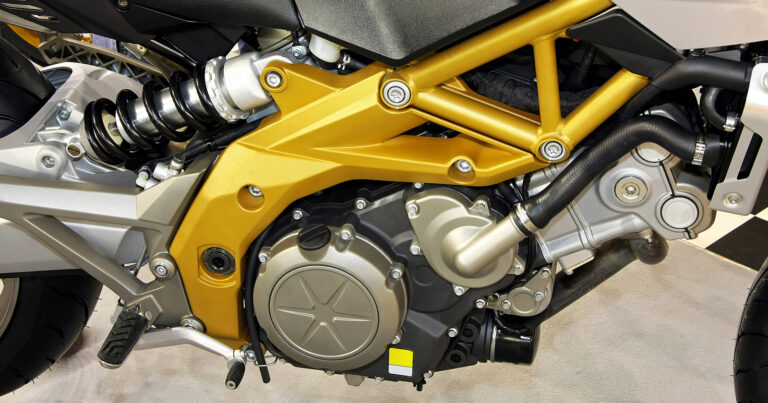6 Symptoms of Harley Davidson Ignition Coil & How to Replace It
This post may contain affiliate links. That means if you click and buy, we may receive a small commission (at zero cost to you). Please see our full disclosure policy for details.
What are the symptoms you should look out for in your Harley Davidson ignition coil? For established riders, this is a no-brainer. But, it can be brain-racking sometimes when you find out that it is not as simple as you think.
Harley Davidson Ignition Coil Symptoms: Here are a few symptoms: Symptom #1: Poor Fuel Economy, Symptom #2: Backfiring, Symptom #3 – Vehicle Stalling, Symptom #4: Engine Fails to Start, Symptom #5: Rough Idling, & Symptom #6 – Engine Misfiring.
Harley coil symptoms can sometimes be so fiddly that you find it hard to locate the issues that give rise to the signs you see on your motorcycle. It is important to equip yourself with all the necessary details to be able to prevent further damage to your vehicle.
In this post, you’ll gather all the information you need so that when you next experience Harley coil symptoms, you can easily nip issues in the bud without delay.
But before then, it is important to know that ignition coils serve as compact electrical transformers that help convert the low voltage (typically 12 volt) into a much higher voltage. This electrical conversion is needed to ignite the fuel and create the spark to start the engine.
Hence, technically, when we say there’s a bad coil, we may be referring to low voltage. Overall, failed or weak ignition coil symptoms vary depending on the extent of the damage to the ignition coil.
Understanding these symptoms early on can save you from costly repairs and ensure your Harley Davidson motorcycle continues to perform at its best. Ignition coils are critical for your engine’s spark generation, and any failure can lead to a cascade of performance issues. Whether you ride a Harley Davidson Sportster, a Dyna, a Low Rider, or an FLH model, recognizing these warning signs is essential for maintaining your bike’s reliability and safety on the road.
Moreover, the symptoms might not always be obvious at first. A slight drop in fuel efficiency or occasional rough idling might be the first hints before more severe problems like engine stalling or failure to start occur. Monitoring your bike’s behavior regularly and performing routine maintenance checks can help detect ignition coil problems early.
If you notice any of these symptoms, it’s advisable to check the coil’s fitment and compatibility with your specific Harley Davidson model. Using the correct coil part number and ensuring it matches your Harley Davidson SKU will help avoid installation issues and guarantee optimal performance. Also, consider the coil’s manufacturer and its features, as some aftermarket coils offer enhanced performance and durability compared to stock units available for sale.
In summary, being proactive about the health of the ignition coil for Harley Davidson motorcycle not only improves your riding experience but also extends the life of your motorcycle’s engine. Keep an eye out for these symptoms, and if you suspect a faulty coil, take prompt action to replace it with a suitable, high-quality part to keep your Harley Davidson running smoothly and safely.
Symptom #1: Poor Fuel Economy
One sign that sends you an indication that you have a bad Harley Davidson ignition coil is that your bike consumes more fuel than it usually does. When this happens, your motorcycle gets less mileage, meaning you’ll need to refuel more often than normal. This increased fuel consumption is often due to incomplete combustion caused by a weak or failing ignition coil. Therefore, it’s important to check your ignition coil as it may have a fault affecting your bike’s fuel efficiency.
Symptom #2: Backfiring
Harley coil symptoms also show in the form of engine backfire. Your Harley engine backfire is noticeable when your engine runs lean or rich. It’s rich when there’s more fuel than air present in the engine, and lean when there‘s more air than fuel present. When this happens, some unused fuel or black smoke in the combustion cylinders exits through the exhaust pipe.
Learn why Harley Davidson Motorcycle’s Backfire here.
Symptom #3 – Vehicle Stalling
Failed Harley Davidson ignition coil results in your bike stalling while working. This usually occurs when the weak coil starts to send some irregular sparks to the spark plugs, disrupting the engine’s combustion process. As a consequence, your bike may suddenly lose power, completely stop working, or fail to restart after shutting off. Such stalling issues can be dangerous, especially while riding, so it’s important to address the problem promptly to avoid further damage or safety risks.
Symptom #4: Engine fails to start
When your engine fails to start, it is a clear symptom of a failed coil. You’ve got to watch out. This is a common sign in single-coil engines, and the engine will produce some cranking sound with no sparks coming from the cylinders.
Symptom #5: Rough idling
Engine jerking, rough idling, and power problems are clear symptoms of whether your ignition coil is bad or weak. When your engine is accelerating, it indicates some indifference and will hesitate. Hence, your bike will sound as though power is missing.
Symptom #6 – Engine Misfiring
Engine misfiring is one Harley coil symptom that is easily noticeable, which indicates that vehicle ignition coils are malfunctioning. Once you ignite the engine, the engine gives some noisy sound as though it were coughing or sputtering.
Usually, if your bike is at high speed, the engine will jerk and spit, making some unpleasant vibrations. And when you get to a stop sign, the engine may fail to start, or it’s idling. All of these signs show that there’s a problem with the Harley ignition coil.
How to Replace an Ignition Coil
Once you find out that your ignition coil is bad, the first step is to disconnect the negative terminal on your battery. Locate the coil that needs replacement. Disconnect the cable leading to the bad coil.
Unscrew the bolts holding the coil, remove the faulty ignition coil for Harley Davidson motorcycle models, and follow the installation process for the new one. Ensure the new ignition coil’s part number matches your Harley Davidson SKU for proper fitment and performance. Always check the product description, item details, and features provided by the seller before purchasing.
When placing your order, verify the quantity, stock availability, and shipping information. Many sellers provide clear photos and pictures of the coil, so review them carefully. Some online stores offer sales and returns options if the item does not fit or work as expected. If you have any questions about compatibility, contact the seller or check the FAQ section for answers.
Final Thoughts
Depending on the model and make of your motorcycle, the price of an ignition coil varies. You may pay $80 for some coils, while others may cost up to $300. On average, prepare around $150. Always review the legal terms, returns policy, and delivery date before confirming your order.
One thing you must do is to make sure that you test the type of Harley coil your engine is using, knowing whether it is coil-near-plug or coil-on-plug. You can get online all the instructions to follow to carry out this test.
Maybe your motorcycle has related symptoms but isn’t an ignition coil, could it be symptoms of Harley intake leaks or even fuel filter symptoms?
Finally, never underestimate the implication of that popular saying: ‘procrastination is the thief of time.’ Delay is dangerous. Get your ignition coil symptoms resolved as soon as they show up.
Featured Images By https://itstillruns.com/test-harley-davidson-ignition-coil-6516657.html
Q: How to replace an ignition coil?
Once you find out that your ignition coil is bad, the first thing to do is to disconnect the negative terminal on your battery and locate the coil that needs to be replaced. Try to disconnect the cable that leads to the bad coil. Used car guide.
Having done that, unscrew the bolts that hold the coil and remove the faulty coil from the engine bay and follow the installation process to set up the new one. Make sure the new ignition coil is compatible with your engine.







